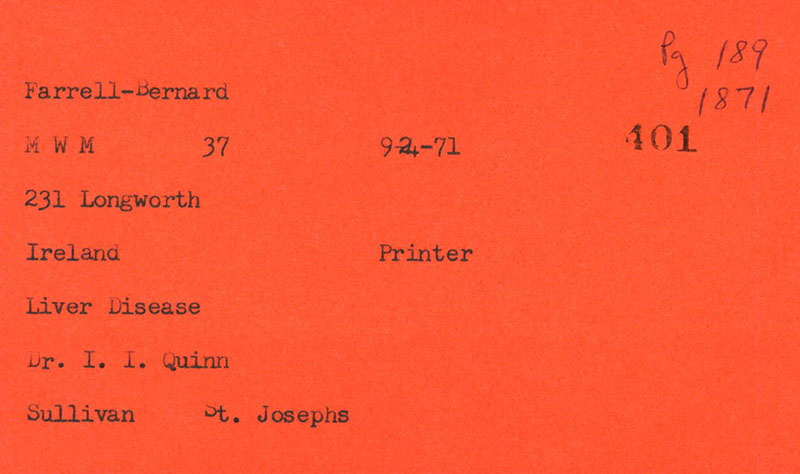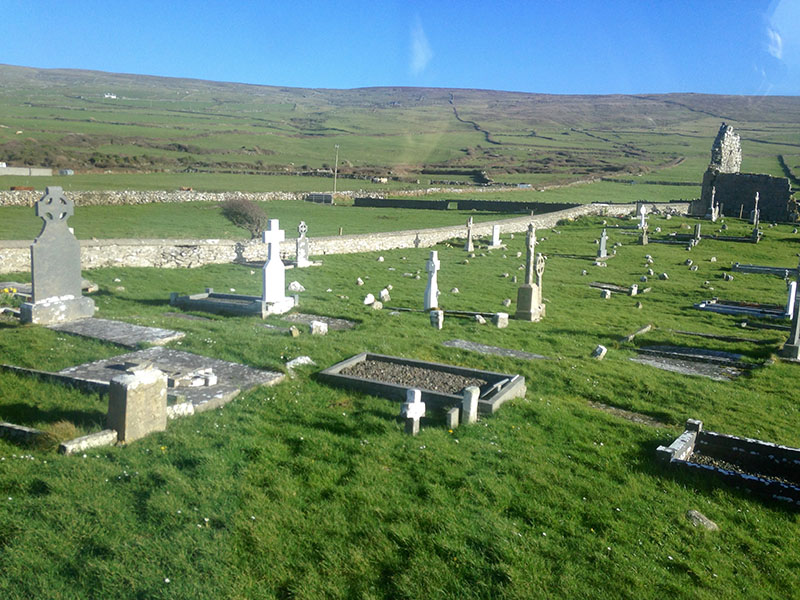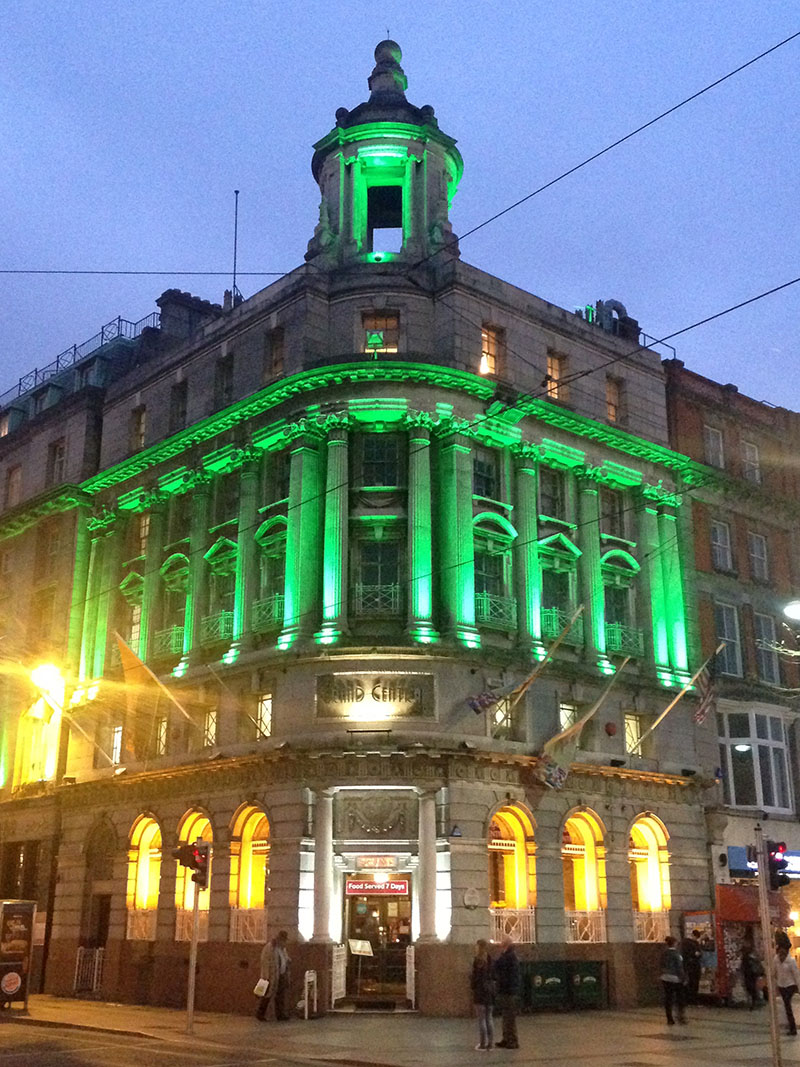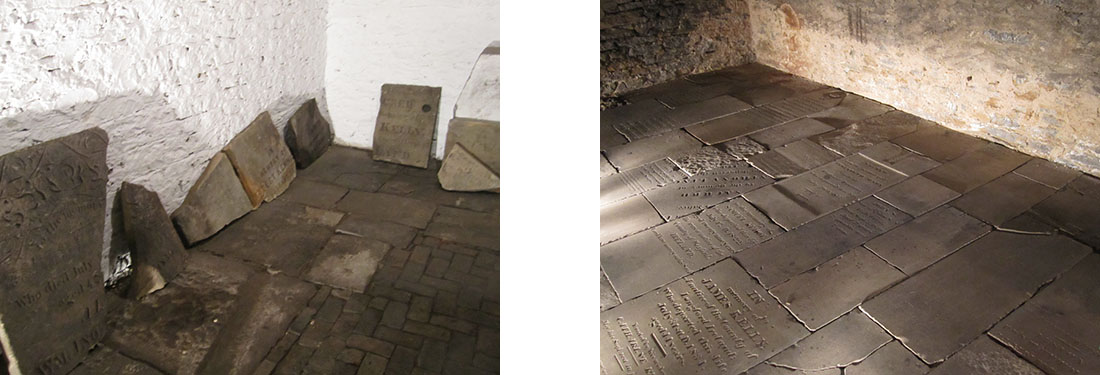By: Kevin Grace
 In 1866, dozens of Cincinnatians, many of them veterans of the Civil War, helped launch an unsuccessful Irish invasion of Canada. After capture by British and Canadian forces, these Cincinnati Irish were repatriated and they came home. In 1894, a young Irish immigrant by the name of Mary “Mollie” Gilmartin, living in Cincinnati’s West End, was killed by a man who had stalked her from County Sligo. Mollie was buried without a grave marker and then forgotten for almost a century. In 1908, a little girl from the Avondale neighborhood wrote her Christmas letter to Santa Claus. Elainae, the six-year-old of a wealthy family asked for a doll and for an Irish maid. And in the 1920s, Ireland’s political leader Éamon de Valera came to Cincinnati to raise money for his emerging independent country. The Cincinnati Irish had deep pockets with an abiding connection to their heritage. These are all fairly disparate stories that touch upon just one of the ethnic groups that shaped Cincinnati then, but what meaning is to be found in them now? How are commonalities with other groups, other eras, and other places discovered and studied?
In 1866, dozens of Cincinnatians, many of them veterans of the Civil War, helped launch an unsuccessful Irish invasion of Canada. After capture by British and Canadian forces, these Cincinnati Irish were repatriated and they came home. In 1894, a young Irish immigrant by the name of Mary “Mollie” Gilmartin, living in Cincinnati’s West End, was killed by a man who had stalked her from County Sligo. Mollie was buried without a grave marker and then forgotten for almost a century. In 1908, a little girl from the Avondale neighborhood wrote her Christmas letter to Santa Claus. Elainae, the six-year-old of a wealthy family asked for a doll and for an Irish maid. And in the 1920s, Ireland’s political leader Éamon de Valera came to Cincinnati to raise money for his emerging independent country. The Cincinnati Irish had deep pockets with an abiding connection to their heritage. These are all fairly disparate stories that touch upon just one of the ethnic groups that shaped Cincinnati then, but what meaning is to be found in them now? How are commonalities with other groups, other eras, and other places discovered and studied?
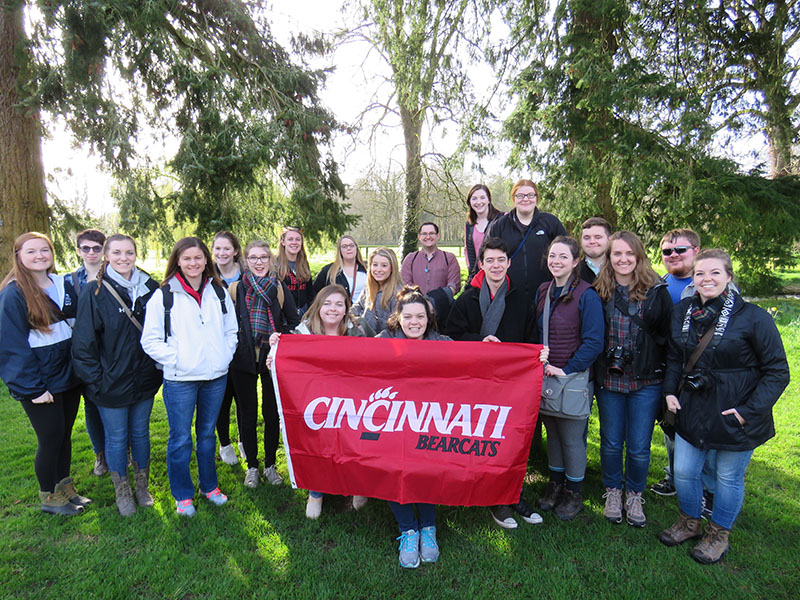
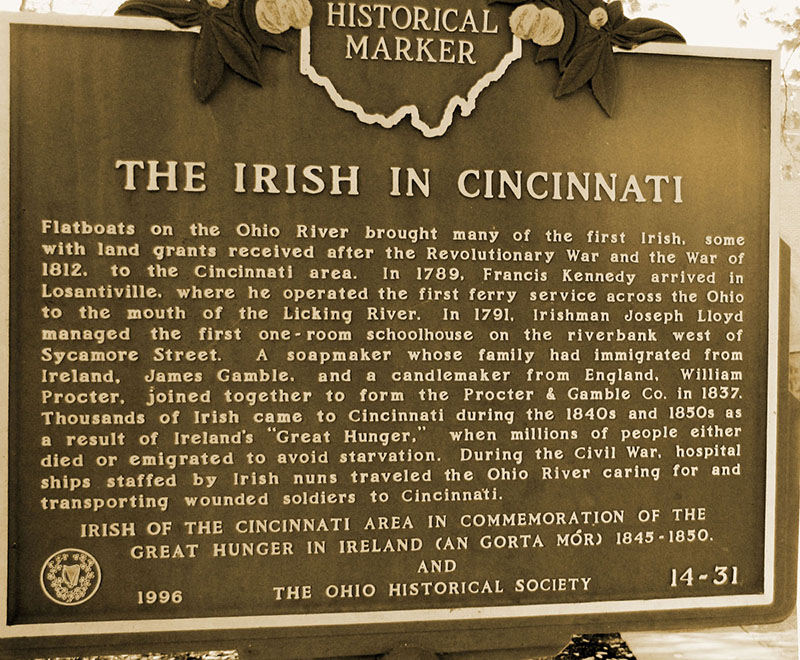 These questions formed the basis this past Spring Semester for an Honors seminar, “The Irish in America,” in which the students used the Cincinnati Irish as a step in exploring the nature of emigration to America from a global perspective and to understand the contemporary relationship between the Irish and Americans of Irish descent. Twenty students from different colleges and of different majors throughout the University of Cincinnati used various readings and films to discuss the nature of emigration and to learn about modern Ireland and America’s interpretation of Irish culture. Additionally they consulted primary sources in the Archives & Rare Books Library and wrote blogs and essays for an “Irish in Cincinnati” website created by ARB intern and seminar student Sydney Vollmer, http://libapps.libraries.uc.edu/exhibits/irish-cincinnati/.
These questions formed the basis this past Spring Semester for an Honors seminar, “The Irish in America,” in which the students used the Cincinnati Irish as a step in exploring the nature of emigration to America from a global perspective and to understand the contemporary relationship between the Irish and Americans of Irish descent. Twenty students from different colleges and of different majors throughout the University of Cincinnati used various readings and films to discuss the nature of emigration and to learn about modern Ireland and America’s interpretation of Irish culture. Additionally they consulted primary sources in the Archives & Rare Books Library and wrote blogs and essays for an “Irish in Cincinnati” website created by ARB intern and seminar student Sydney Vollmer, http://libapps.libraries.uc.edu/exhibits/irish-cincinnati/.
And while the students also prepared for a spring break study tour to Ireland, they began their research in the digitized 19th century Cincinnati birth and death records held by the UC Libraries. In 2003, over half a million records were transferred to the Archives & Rare Books Library as part of the statewide Local Government Records Program and several years ago, the University of Cincinnati Libraries received a grant to digitize them. Before digitization, for the most part use of the records was done by family history researchers. However, once available over the internet, these documents could be accessed in a variety of ways and for many different reasons. Working as collaborative scholars, the Honors students were the first course to use them for academic research, and their assignment was to extract data about the Cincinnati Irish.
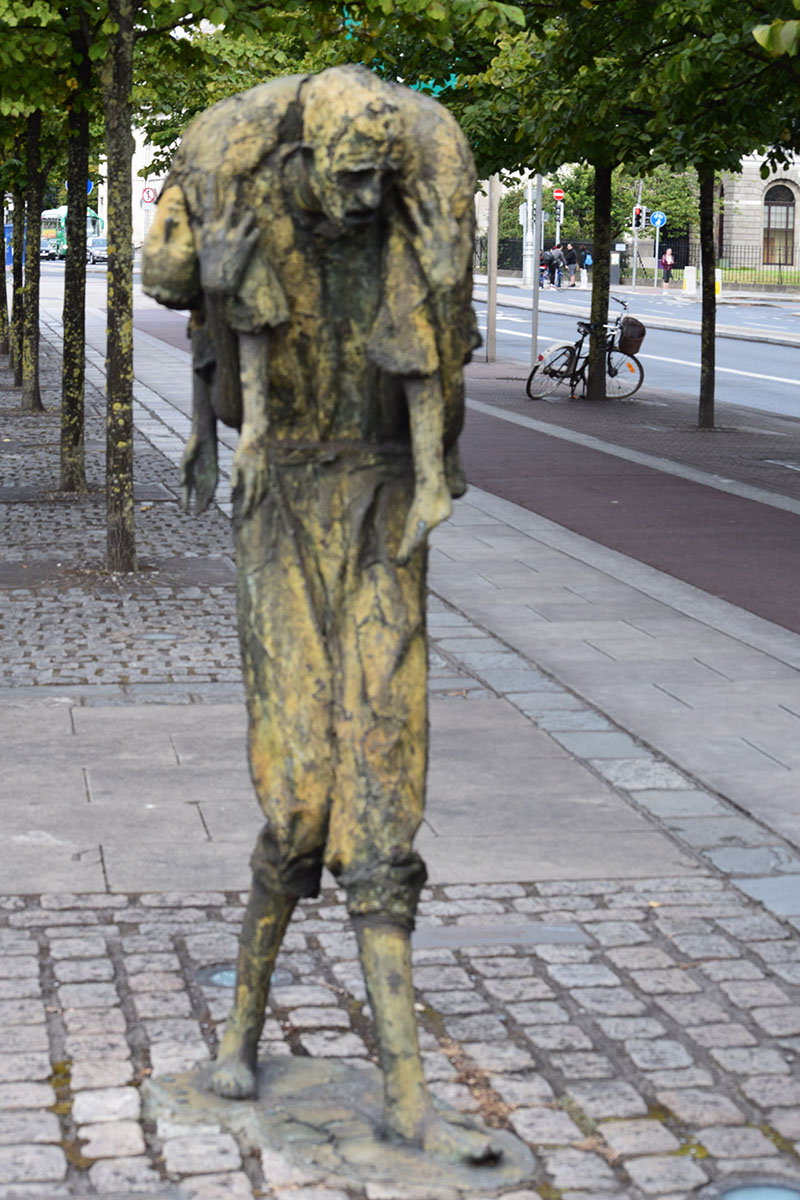 From that half-million record database of all Cincinnati deaths from roughly 1865 to 1912, each student selected an occupation, a discrete group, or a cause of death for the Irish – factory workers or saloonkeepers, nuns and priests, women who died in childbirth or people with tuberculosis for example, http://libapps.libraries.uc.edu/exhibits/irish-cincinnati/cincinnati-irish-births-and-deaths/.
From that half-million record database of all Cincinnati deaths from roughly 1865 to 1912, each student selected an occupation, a discrete group, or a cause of death for the Irish – factory workers or saloonkeepers, nuns and priests, women who died in childbirth or people with tuberculosis for example, http://libapps.libraries.uc.edu/exhibits/irish-cincinnati/cincinnati-irish-births-and-deaths/.
Because the students had to go beyond the local community to the entire Irish diaspora in a way, it was essential to employ experiential learning in Ireland itself. For spring break 2017, an itinerary was developed that would take them first to Limerick, then to Cork, and finally to Dublin over a ten-day period. They needed to learn about the politics, the religious and family conflicts, the wars, the famines, the economy, and the landscape that drove the Irish to leave the island over the past four centuries as well as those same factors influencing emigration or return in today’s world. They also sought to understand how America and Ireland interrelate today and how the Irish regard Americans, especially in terms of a tourist economy. They needed to observe other Americans visiting Ireland, learning the difference between “tourists” and “travelers.” They needed to talk with the Irish.
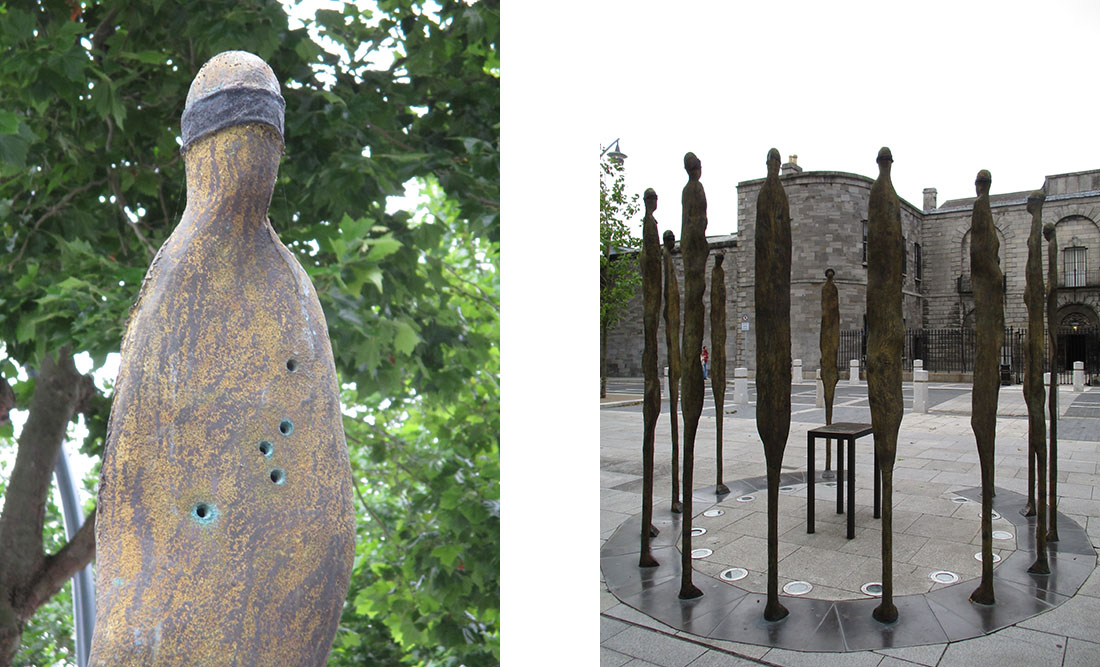 Having read Frank McCourt’s popular memoir, Angela’s Ashes, in Limerick the students visited the school he attended while growing up in the 1940s and ‘50s. On a tour to the Ireland’s west coast, they saw the deserted and decrepit “famine houses” of the 1850s, the make-work stone famine walls climbing the hills, and the unmarked graves of those who starved to death. In County Cork, the students journeyed to Cobh, known as Queenstown when many Irish immigrated to America from that debarkation port a century ago. In Dublin, they witnessed how that city has appropriated the showy, souvenir-filled parade of St. Patrick’s Day from America, and how places like Kilmainham Gaol,
Having read Frank McCourt’s popular memoir, Angela’s Ashes, in Limerick the students visited the school he attended while growing up in the 1940s and ‘50s. On a tour to the Ireland’s west coast, they saw the deserted and decrepit “famine houses” of the 1850s, the make-work stone famine walls climbing the hills, and the unmarked graves of those who starved to death. In County Cork, the students journeyed to Cobh, known as Queenstown when many Irish immigrated to America from that debarkation port a century ago. In Dublin, they witnessed how that city has appropriated the showy, souvenir-filled parade of St. Patrick’s Day from America, and how places like Kilmainham Gaol,
Guinness Brewery, and St. Stephen’s Green, and events like the Easter Rising of 1916 have influenced the Americanperception of Irish culture. They saw the stark and poignant bronze sculptures of artist Rowan Gillespie depicting famine victims and the sixteen Irishmen executed by the British after the Rising. And one of their stops, on the north side of the Liffey River, was the new EPIC The Ireland Emigration Museum about the Irish diaspora to the United States, Canada, Australia, and around the world. EPIC is a new interactive museum that is the brainchild of Neville Isdelle, who was born in County Down and is the former chairman of the Coca-Cola Company. Opened in 2016 and located on Dublin’s Custom House Quay, the museum is an incredible journey of discovery of what the Irish left behind and what they contributed to the world.
Back in Cincinnati to resume the semester, the class continue work on the website and on their research into Irish deaths. In modified PhotoVoice assignments, the students used a photograph taken in Ireland to talk about what the study tour had revealed to them. One person, nursing student Mickayla Beckett, used the assignment to create a visual narrative of her understanding of emigration and the immigrant’s sense of place in the world, and it’s a beautiful take on the seminar’s purpose, http://libapps.libraries.uc.edu/exhibits/irish-cincinnati/personal-stories/photo-voice-2017/.
 The website was their “deliverable,” a project intended for continued growth in content and as a beginning point for other students and scholars to conduct extended research, and, for the general public as well. It is a community resource that reveals important demographic information for the late 19th century in Cincinnati like the neighborhoods in which the Irish lived, the employment they held, their illnesses, and, their deaths. For example, Andrea Middendorf wrote of deaths in childbirth, http://libapps.libraries.uc.edu/exhibits/irish-cincinnati/cincinnati-irish-births-and-deaths/death-from-childbirth-and-the-cincinnati-irish/, Samantha Besse researched the causes of death for Irish domestics, http://libapps.libraries.uc.edu/exhibits/irish-cincinnati/cincinnati-irish-births-and-deaths/irish-domestics-in-cincinnati/, and Gabriel Brown researched the causes of death for those Irish who were sent to Cincinnati’s Longview State Hospital for the Insane, http://libapps.libraries.uc.edu/exhibits/irish-cincinnati/cincinnati-irish-births-and-deaths/longview-asylum-good-intentions-gone-wrong/.
The website was their “deliverable,” a project intended for continued growth in content and as a beginning point for other students and scholars to conduct extended research, and, for the general public as well. It is a community resource that reveals important demographic information for the late 19th century in Cincinnati like the neighborhoods in which the Irish lived, the employment they held, their illnesses, and, their deaths. For example, Andrea Middendorf wrote of deaths in childbirth, http://libapps.libraries.uc.edu/exhibits/irish-cincinnati/cincinnati-irish-births-and-deaths/death-from-childbirth-and-the-cincinnati-irish/, Samantha Besse researched the causes of death for Irish domestics, http://libapps.libraries.uc.edu/exhibits/irish-cincinnati/cincinnati-irish-births-and-deaths/irish-domestics-in-cincinnati/, and Gabriel Brown researched the causes of death for those Irish who were sent to Cincinnati’s Longview State Hospital for the Insane, http://libapps.libraries.uc.edu/exhibits/irish-cincinnati/cincinnati-irish-births-and-deaths/longview-asylum-good-intentions-gone-wrong/.
The use of primary sources like the death records and other ARB materials on Cincinnati was key to the students’ learning about Irish emigration and life in America, as well as the overall story of immigration to the United States. Through what they learned and what they did with that knowledge, they help others to learn.
Beneath the streets of Cincinnati, in the sub-basement of St. Francis Seraph Church in Over-the-Rhine, Irish tombstones cover the floor. They represent some of the earliest Irish immigrants in Cincinnati and are a physical reminder of that heritage. And there are buildings like an old Hibernian hall that stand as a touchstone of that history, or the commemorative marker in Sawyer Point 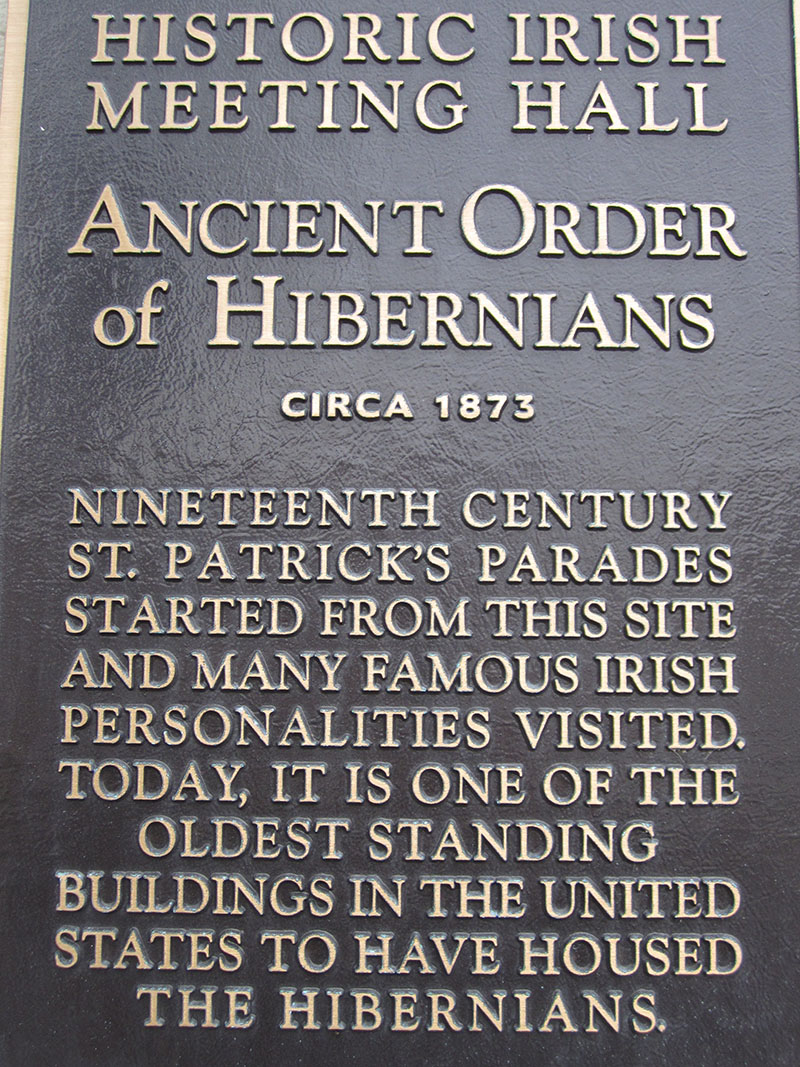 Park about Irish immigration. Other aspects may not be so tangible but no less real: those post-Civil War Irishmen who invaded Canada became judges and lawyers and mail carriers and policemen in Cincinnati. Mollie Gilmartin’s grave was found a few years ago and family members from County Sligo came to hold a memorial service and have some closure over a family tragedy. And Cincinnati Irish organizations like Irish Cultural Heritage Center, the Friendly Sons of St. Patrick, and the Hibernians still maintain a close identification with the island. But there still remains a question of what little Elainae received for Christmas in 1908.
Park about Irish immigration. Other aspects may not be so tangible but no less real: those post-Civil War Irishmen who invaded Canada became judges and lawyers and mail carriers and policemen in Cincinnati. Mollie Gilmartin’s grave was found a few years ago and family members from County Sligo came to hold a memorial service and have some closure over a family tragedy. And Cincinnati Irish organizations like Irish Cultural Heritage Center, the Friendly Sons of St. Patrick, and the Hibernians still maintain a close identification with the island. But there still remains a question of what little Elainae received for Christmas in 1908.
To learn more about ARB’s primary sources for research and teaching, please visit our website, http://libraries.uc.edu/arb.html, call us at 513.556.1959, email us at archives@ucmail.uc.edu, stop by on the 8th floor of Blegen Library, or have a look at our Facebook page, https://www.facebook.com/ArchivesRareBooksLibraryUniversityOfCincinnati.

